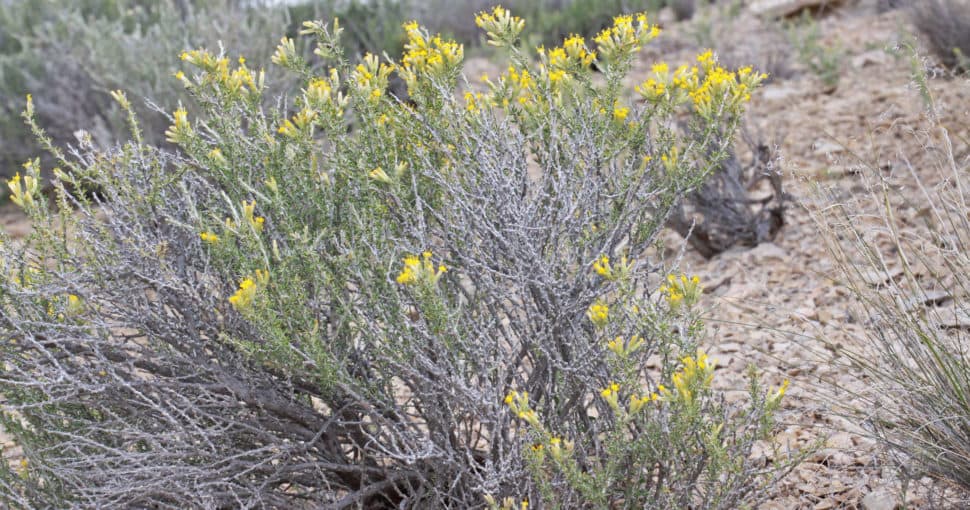Native and imported plants are abundantly found in Washington State. Animals and humans should avoid eating these plants since they might be poisonous to them. Signs of plant poisoning might range from as light as temporary indigestion to as severe as abrupt death. It is essential for all livestock producers to become aware of the hazardous plants growing in locations where they graze or keep their animals.
Contents
- 1. Japanese Yew (Taxus Cuspidata)
- 2. Oleander (Nerium Oleander)
- 3. Meadow Death Camas (Zigadenus Venenosus)
- 4. Greasewood (Sarcobatus Vermiculatus)
- 5. Dogbane/Indian Hemp (Apocynum Cannabinum)
- 6. Horse Brushes (Tetradymia Glabrata)
- 7. Poison Hemlock (Conium Maculatum)
- 8. Cow Parsnip (Heracleum Maximum)
- 9. Giant Hogweed (Heracleum Mantegazzianum)
- 10. Buttercups (Ranunculus)
- 11. Climbing Nightshade (Solanum Dulcamara)
- 12. Poison Ivy (Toxicodendron Radicans)
- 13. Spurges (Euphorbia)
- 14. Stinging Nettle (Urtica Dioica)
- 15. Poison Oak (Toxicodendron Diversilobum)
- 16. Queen Anne’s Lace/Wild Carrot (Daucus Carota)
- 17. Baneberry (Actaea Rubra)
- 18. Bracken Fern (Pteridium Esculentum)
- 19. Leather Flower (Clematis)
- 20. Fiddleneck (Amsinckia)
- 21. Larkspur (Delphinium)
- 22. Nightshade (Solanaceae)
- 23. Golden Ragwort (Packera Aurea)
- 24. Scotch Broom (Cytisus Scoparius)
- 25. Bog Laurel/Swamp Laurel (Kalmia Polifolia)
Many of the toxic plants found in Washington State appear to be harmless at first glance. However, they may be hazardous to humans and animals. Some plants have skin-damaging toxins that produce rashes, blisters, and itching, while others have internal poisons that result in nausea, lip swelling, vomiting, and other symptoms when ingested.
Depending on where you go in Washington State, you can come across Oleander, Japanese Yew, Greasewood, Horse Brushes, and other dangerous plants. If you have an adequate understanding of these plants, you can keep yourself, your pets, and your kids safe. It is essential to seek medical assistance right away if you get exposed to any of these plants or ingest them.
So, here we have listed the 25 most dangerous and poisonous plants in Washington State that you need to avoid:
1. Japanese Yew (Taxus Cuspidata)
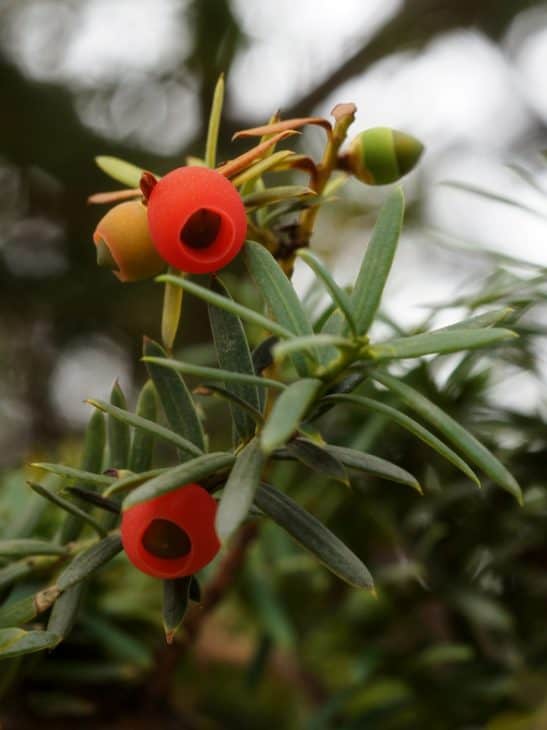
Japanese yew has bright yellow flowers and stunning red berries that make for festive holiday decorations, but the plant and its seeds are highly poisonous and must not be ingested. They are very dangerous for humans and all animals, and if ingested accidentally, the person must get immediate medical help as it contains a toxin called taxine A and B that causes heart failure.
2. Oleander (Nerium Oleander)
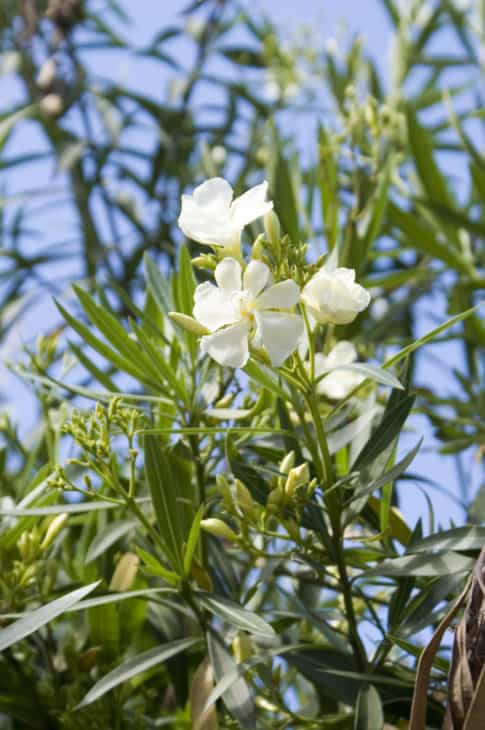
Oleander is an exceedingly dangerous plant found in the wild. Consumption of dry oleander leaves can be deadly if they comprise 0.005% of the bodyweight of an animal. According to recent investigations, nearly three leaves of oleander can be dangerous for crossbred heifers and horses. Researchers analyzed that the average dangerous dosage of the leaves of this plant is around 26 mg per kilogram of its body weight.
3. Meadow Death Camas (Zigadenus Venenosus)
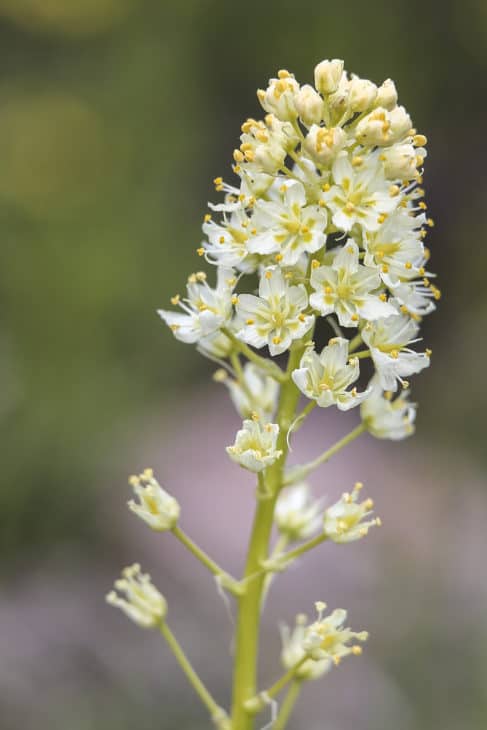
The meadow death camas is a highly poisonous and dangerous plant. It is a perennial plant with showy flowers. These flowers are small and can vary in color, which may include green, cream, or white. This plant is known for being toxic to a variety of animals, including pigs, goats, cattle, and sheep. It has also affected various people.
4. Greasewood (Sarcobatus Vermiculatus)
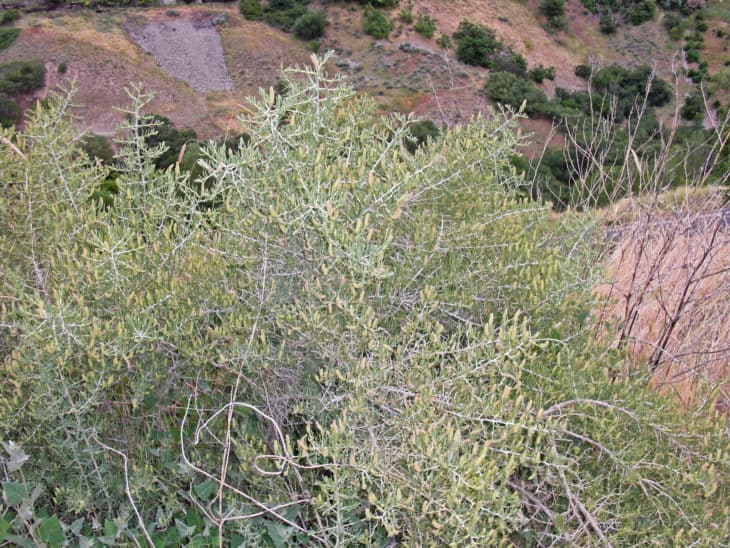
Soluble sodium and potassium oxalates in black greasewood pose a risk to domestic sheep and cattle if significant quantities are ingested in a short time. Plant oxalate concentrations in the plant vary seasonally and geographically, with peak levels occurring in the late summer and early fall. Large amounts of oxalates can precipitate in the kidneys and urinary system, although domestic animals seem to be able to clear moderate levels of oxalates quickly.
5. Dogbane/Indian Hemp (Apocynum Cannabinum)
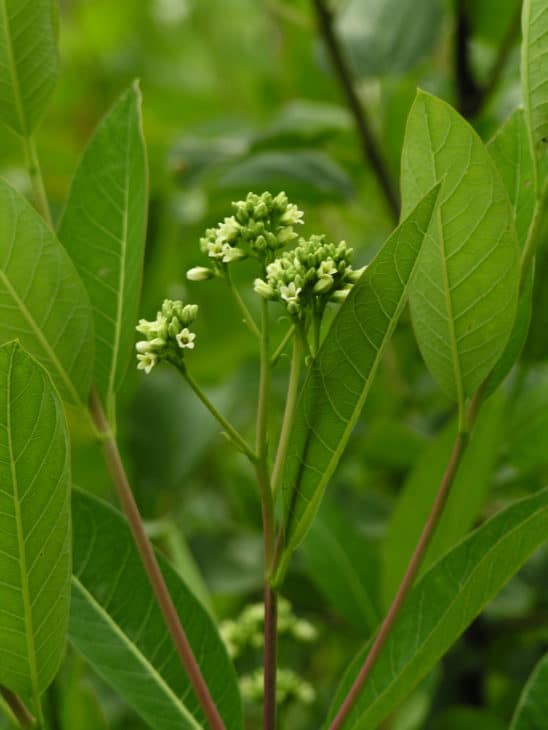
Apocynum cannabinum can be found in the southern part of Canada and all over the United States. The scientific name of this plant is Apocynum. A person who ingests any part of this plant might die from cardiac arrest. The Indian Hemp plant can reach a height of 5 feet. When bruised, this plant’s components release a milky fluid, and all portions of the plant are regarded as very hazardous to humans by the scientific community.
6. Horse Brushes (Tetradymia Glabrata)
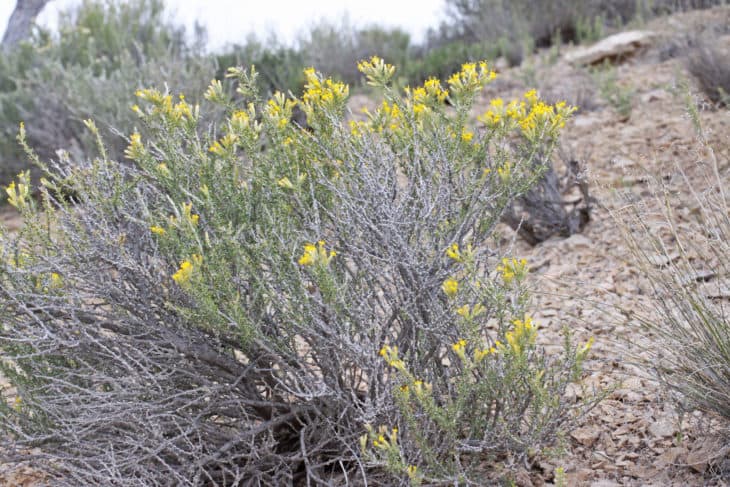
Littleleaf horsebrush is the popular name for a blooming plant in the aster family, Tetradymia glabrate. It is a native of the Mojave and Great Basin deserts in the western United States. Forests, sagebrush, and scrubland are all part of its natural habitat. Spineless horsebrush and this particular species are the most harmful to sheep because of furanoeremophilanes and other poisonous compounds present in the plant. It is highly toxic when ingested with black sagebrush.
7. Poison Hemlock (Conium Maculatum)
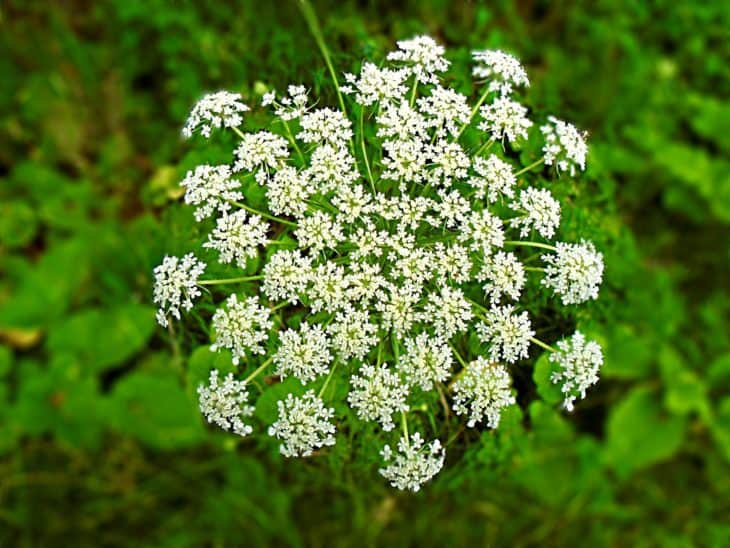
Poison hemlock has recently become a big problem in Washington State as it has a very aggressive rate of spreading. It can spread through rivers and streams as well as through animals and the wind. It is an extremely poisonous herbaceous plant and is very resilient. It can survive in a variety of climates and has a tendency to become an aggressive weed. Its leaves are toxic to animals and humans both.
8. Cow Parsnip (Heracleum Maximum)
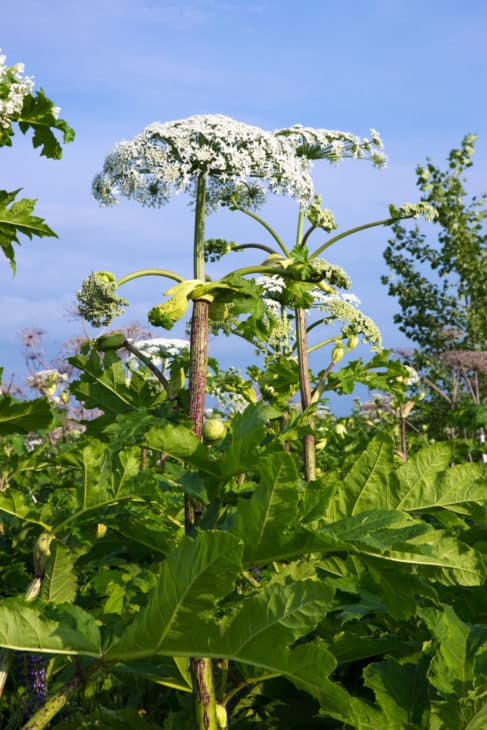
The cow parsnip plant grows to about 10 feet tall when fully mature and has white flowers present in clusters of about 30 flowers. This plant is typically located in moist fields with part shade and sunlight. Streambanks are another common area where the plant is found. The plant can cause rashes if it touches your skin and then reacts with sunlight.
9. Giant Hogweed (Heracleum Mantegazzianum)
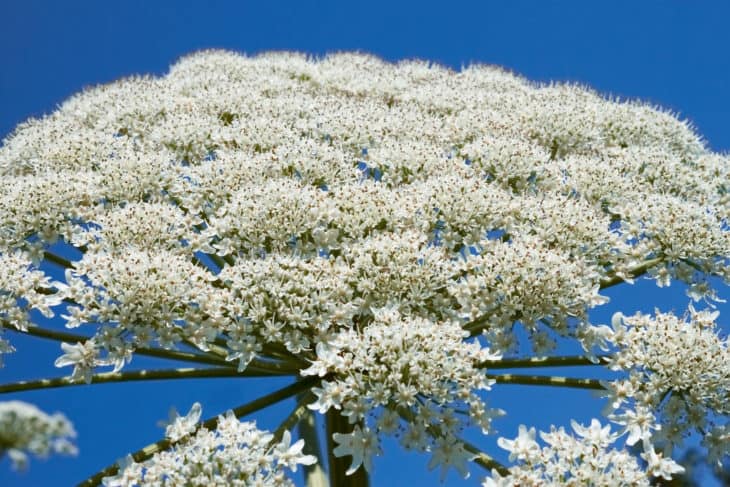
The giant hogweed plant can grow to a maximum height of about 14 feet. It has green stems with white hairs and purple blotches over them. In addition to that, it has clusters of white flowers. You can get poisoned by this plant if you come into contact with it. You may experience painful dark blisters about two days after being exposed to the plant.
10. Buttercups (Ranunculus)
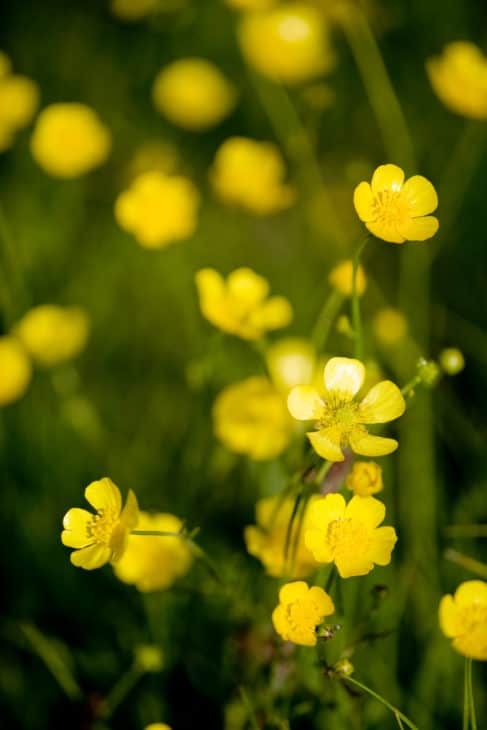
The leaves of the plant buttercups (ranunculus) are complex, with three strongly lobed leaflets, and have smooth stems and yellow flowers. It is important to note that while dried buttercup may not be harmful, the leaves of this plant are known to be exceedingly poisonous, and swallowing even a small amount will likely result in diarrhea, nervous twitching, and seizures.
11. Climbing Nightshade (Solanum Dulcamara)
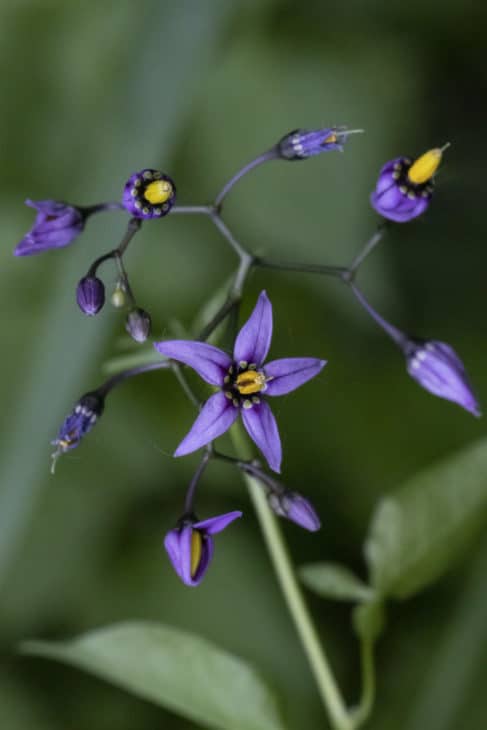
The plant Solanum dulcamara belongs to the Solanum genus in the Solanaceae family. Any portion of the deadly nightshade plant should be avoided while cooking or preparing food. The Missouri Botanical Garden warns that simply coming into contact with the plant might be hazardous if the skin is damaged. Skin that is intact and in excellent condition should serve as a protective barrier from this plant. However, you should wear gloves if you need to handle the plant.
12. Poison Ivy (Toxicodendron Radicans)
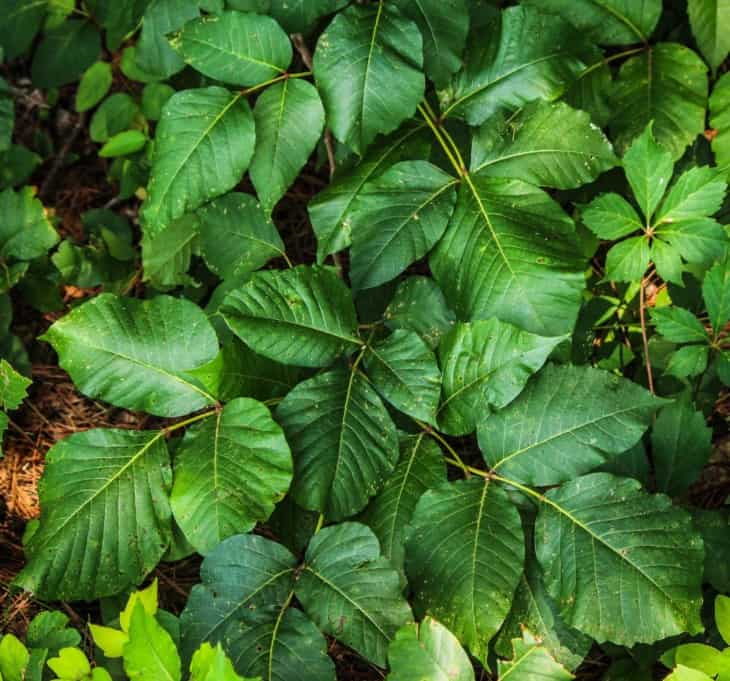
Poison ivy is an allergenic plant commonly found in Asia and East America. It has been known to cause contact dermatitis or a painful and itchy skin rash. This is caused by urushiol, a clear liquid found in its sap. The poison ivy is usually seen to grow with support as a climbing vine along a trailing vine. Caution is advised to avoid accidental ingestion or contact of poison ivy with the eye as it can cause a severe reaction.
13. Spurges (Euphorbia)
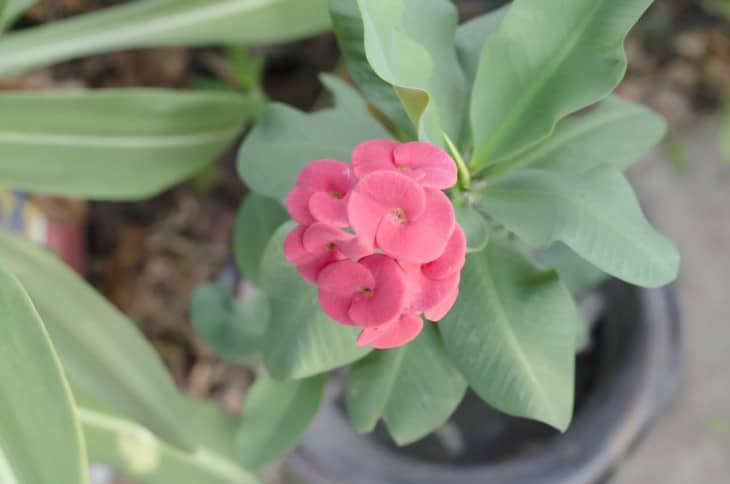
Spurges are a genus of perennial, annual, and biennial herbs, shrubs, and small trees that contain toxic, milky sap. It features tiny, nondescript blooms and clusters of colorful bracts. The sap of Spurges can cause your skin to irritate. If parts of the plant are eaten, it can result in nausea or vomiting. This plant features green leaves with variegated white and yellow stripes. The foliage grows on top of woody branches.
14. Stinging Nettle (Urtica Dioica)
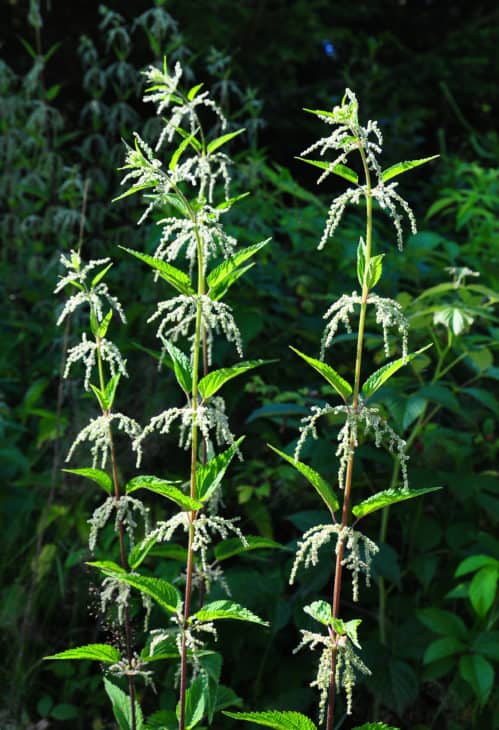
Native to temperate North America and Europe, Stinging Nettle is an herbaceous, weedy, dioecious perennial that grows wonderfully in nitrogen-rich soils. This plant has rigid, upright stems and finely teethed, dark green, opposite, heart-like leaves with tapered ends. It also develops green or white tiny blooms that grow in copious whorled clusters. The foliage of these plants contains hairs or bristles that release a stinging toxin, which can pierce your skin and cause burns and itching.
15. Poison Oak (Toxicodendron Diversilobum)
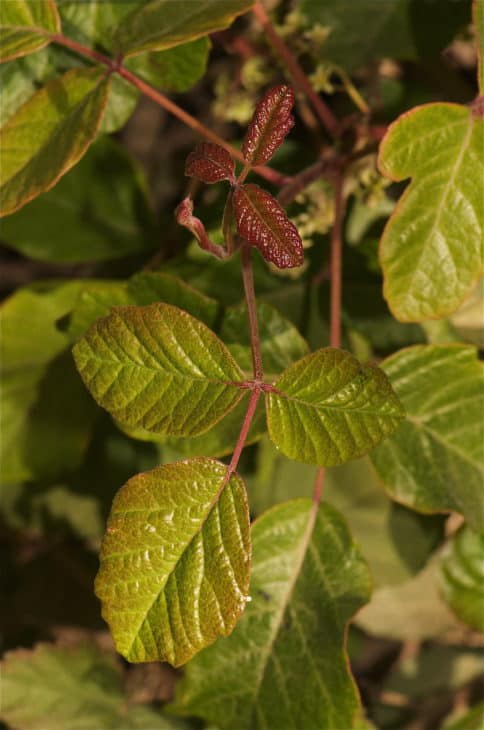
Those who contact poison oak plants by touching or inhaling the plant’s smoke are more likely to experience irritation and allergic reactions. So, it is frequently removed from gardens and public landscaped spaces. But it may still be used in wildlife gardens, habitat gardens, and natural landscapes if placed in the right place. Habitat restoration programs rely on poison oak.
Related: 7 Plants That Look Like Poison Oak
16. Queen Anne’s Lace/Wild Carrot (Daucus Carota)
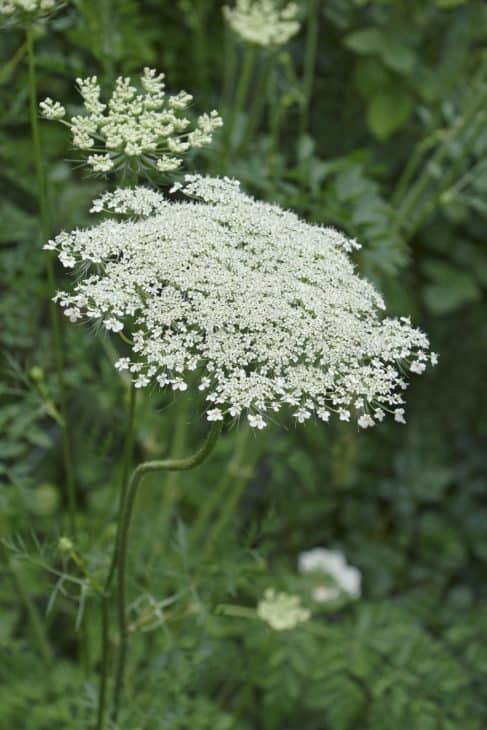
This plant is known as Queen Anne’s lace or wild carrot. The leaves on this plant are triangle in shape, lacy, and divided finely. It has a solid and stiff stem, and the plant has small white flowers that are clustered together. Physical contact with this plant may lead to skin irritation. This is more likely if the plant is wet.
17. Baneberry (Actaea Rubra)
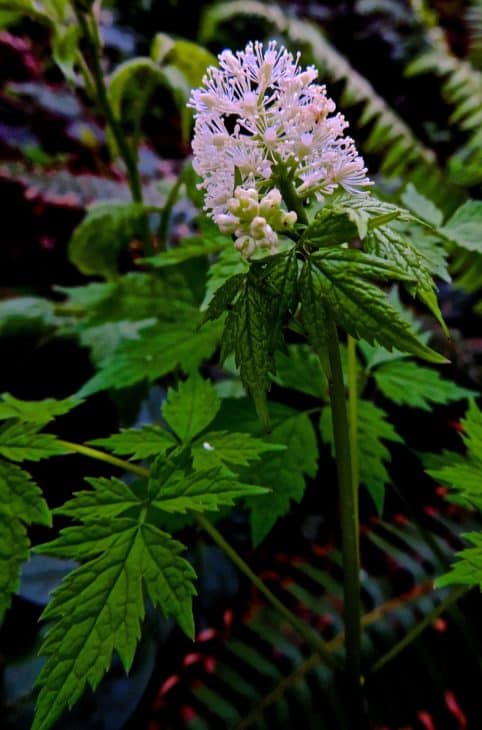
If the fruits of Red and White Baneberry (Actaea Rubra) are consumed by a human, they are extremely poisonous and can have a negative impact on the neurological system. Baneberries have been linked to the deaths of children in Europe, but they have not been linked to the deaths of humans or cattle in the United States, according to reports.
18. Bracken Fern (Pteridium Esculentum)
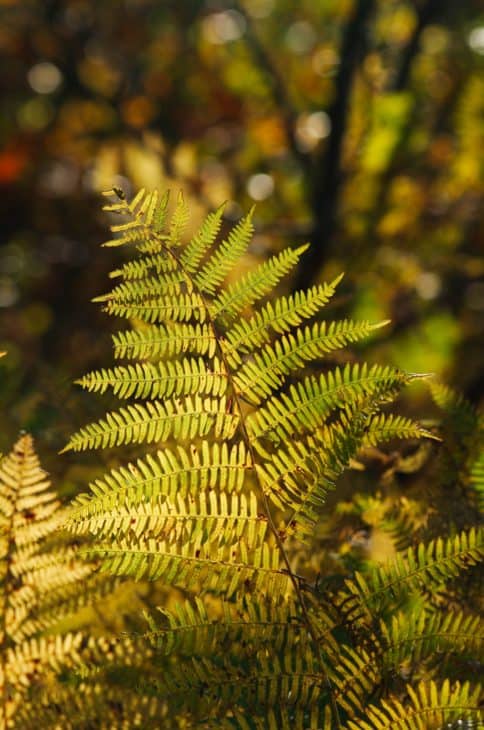
There are several species of bracken in the genus, but Pteridium esculentum, better known as bracken or Austral bracken, is among them. It is endemic to several regions in the Southern Hemisphere. However, there is a problem with bracken: It is edible, but it is also very poisonous, especially the fiddleheads, and has caused farmers’ stomachs to hurt for ages.
19. Leather Flower (Clematis)
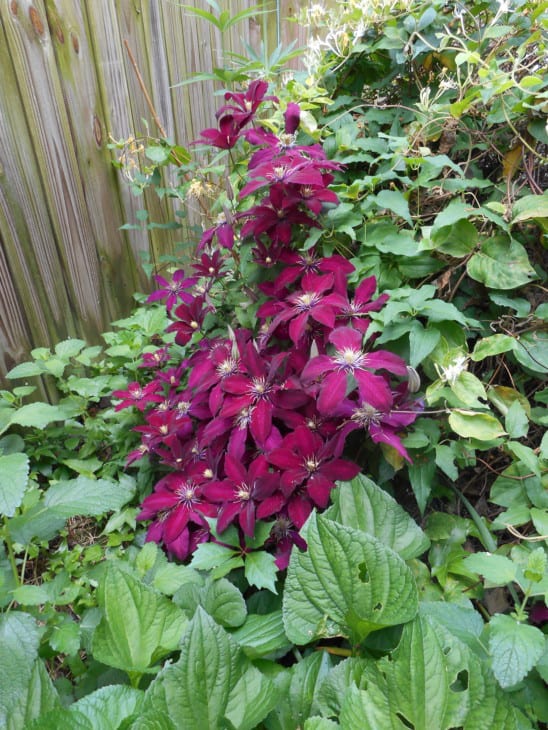
Ranunculaceae, the family of buttercups, include the genus Clematis, containing roughly 300 species. Clematis jackmanii, a garden staple since 1862, is only one of the many hybrid cultivars created by the genus Clematis over the years. Clematis leather flower vine is one of about 300 vines with woody stems in the clematis genus known as leather flower vines. Several chemicals in this vine give it mild toxicity.
20. Fiddleneck (Amsinckia)
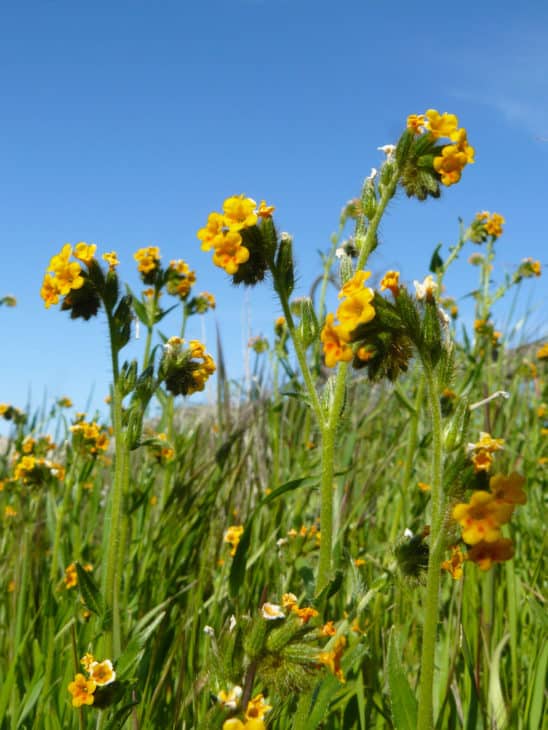
Fiddleneck plants are given the name because the flowers on the stems curl up, resembling a fiddle. They originate primarily in regions of North and South America. The stems and leaves of fiddlenecks are poisonous to cattle as they contain alkaloids and a high concentration of nitrates and have especially affected horses over the years. The high concentration of nitrates causes irreversible liver damage and occurs over weeks to months.
21. Larkspur (Delphinium)
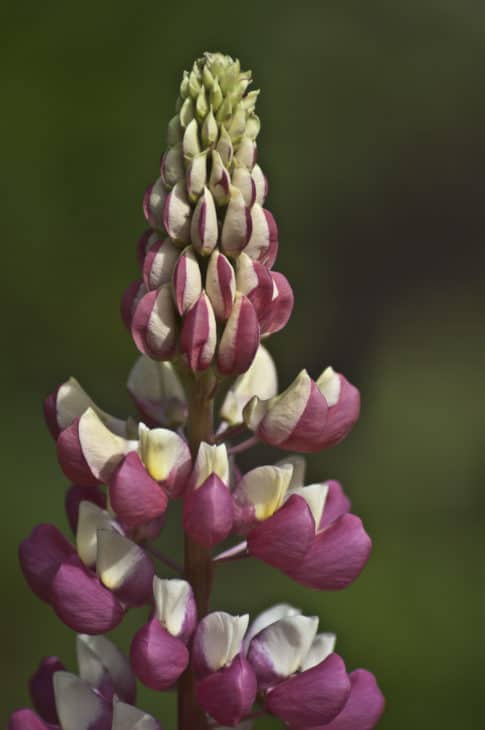
Larkspur is a beautiful plant loved by gardeners as it has beautifully cut blue flowers and blooms in spring. Unfortunately, it is highly poisonous to cattle, causing heavy losses due to neurotoxicity when ingested in large amounts. Symptoms of poisoning include weakness, salivation, nausea, vomiting, muscular twitching, and rapid pulse. Animals may fall suddenly due to paralysis and respiratory failure from the toxicity of the plant.
22. Nightshade (Solanaceae)
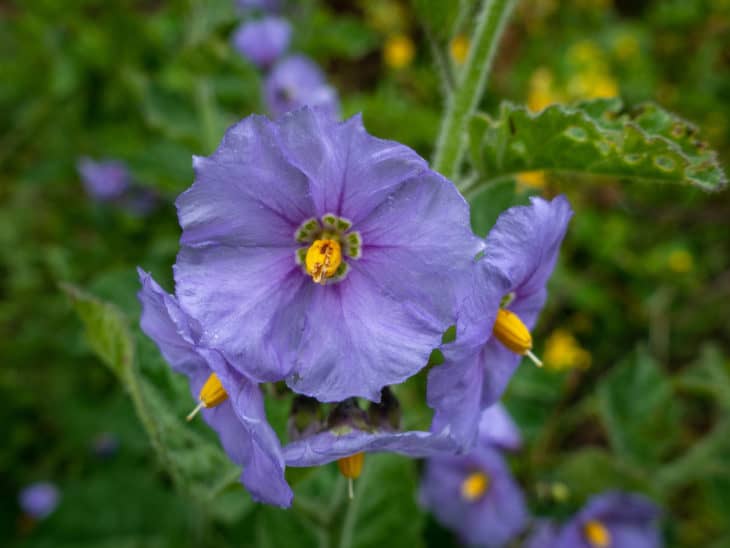
The deadly nightshade is among the most dangerous plants in Washington state, and it is also one of the most widespread. While the stems are the most dangerous component of the plant, poisonous alkaloids are found throughout the entire plant. These poisons include scopolamine and hyoscyamine, which together cause insanity and delusions in their victims.
23. Golden Ragwort (Packera Aurea)
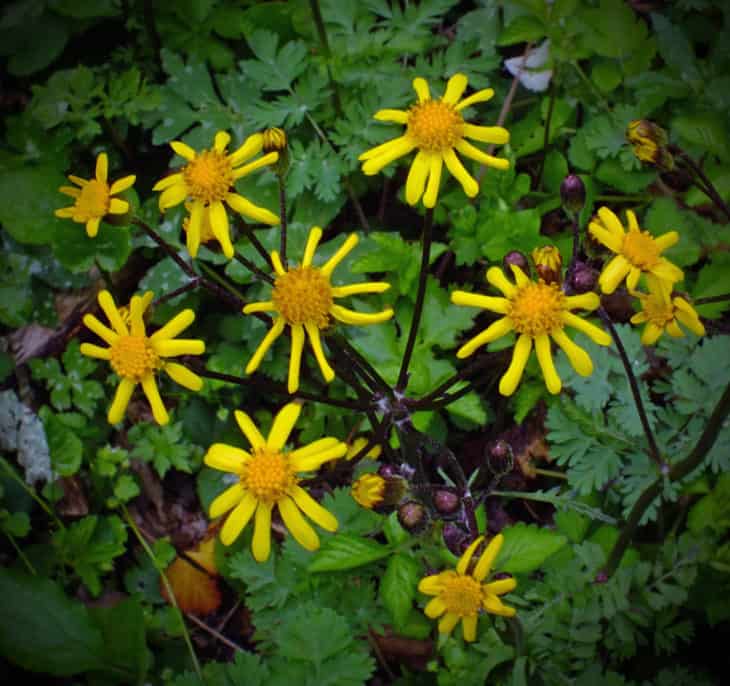
Ragwort contains poisons known as pyrrolizidine alkaloids, which are toxic to the body. When consumed in large enough numbers, they can induce liver toxicity in horses and other livestock. It is a poison that builds up over time and eventually results in symptoms before death. Ragwort plants have straight, buttercup yellow flowers, and they bloom from late summer to mid-autumn. Checkout some Ragwort alternatives if you want to play on the safe side.
24. Scotch Broom (Cytisus Scoparius)
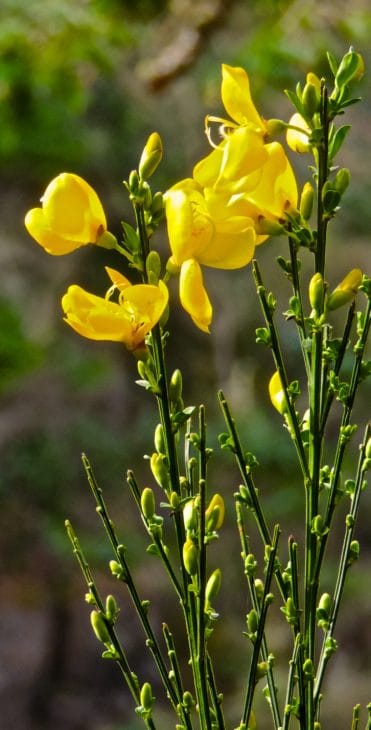
Open spaces, particularly those with recent soil disturbance, are inundated with Scotch broom. Since scotch broom will take over native and valuable plants, grassland and woodland habitats will be lost. The seeds and other plant pieces poison humans, horses, and other livestock. Toxins called quinolizidine alkaloids can be found in this plant. Throughout the entire plant, this is to be found. The effects of ingestion include vomiting, nausea, diarrhea, lack of coordination, fatigue, and an elevated heart rate.
25. Bog Laurel/Swamp Laurel (Kalmia Polifolia)
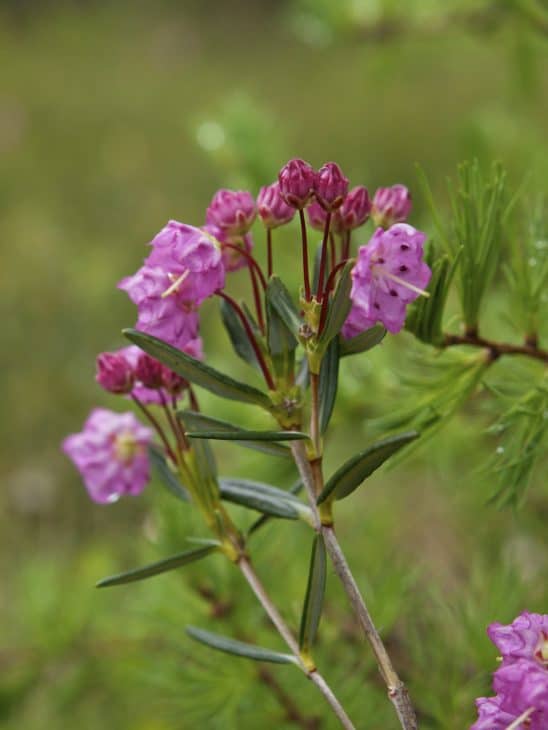
Bog laurel, pale laurel, or swamp laurel is an evergreen perennial plant of cold, acidic bogs. Kalmia polifolia, known initially as Kalmia glauca, is a member of the Ericaceae family. Because of its extreme toxicity, bog laurel should never be consumed. Grayanotoxins are toxic substances found in its leaf and nectar. If swallowed, it might be lethal. Since it poses such a threat to contemporary herbalism, it is rarely, if ever, used in any way.

